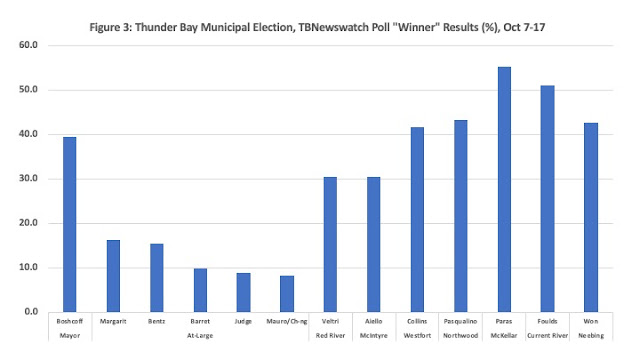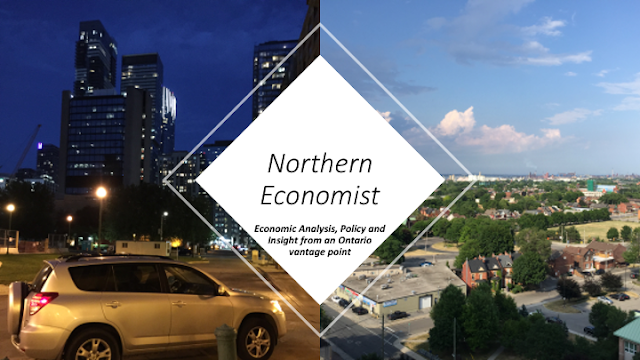The federal election has taken on a somewhat bi-polar
ambiance alternating from existential dread in the face of Trumpian tariff and
annexation discourse to the usual vote buying behaviour with what is ultimately
taxpayer’s money no matter who wins. Indeed, the election promises have been coming fast and furious popping up like spring flowers. One
might have expected that Canadians were going to get thoughtful proposals on
how Canada and Europe might come together in a new economic and security
alliance, perhaps with additional links that included Australia, New Zealand
and the UK in a new global partnership spanning the Atlantic and Pacific via
the Arctic. This after all is probably
one of Canada’s more consequential elections ranking up there with 1911 and
1988 given the focus on our economic relations with the economic behemoth to
our south.
For the most part, Canada’s party leaders are not painting a
compelling vision of how Canada will make its way in a dangerous and shifting
geopolitical world devoid of American leadership over the next quarter of the
21st century. For the
Conservatives, the campaign has not gone the way they were expecting given
their substantial lead has evaporated with the arrival of the new Liberal
leader. The Conservatives seem unable to
move beyond the baggage of the Trudeau administration which correctly speaking
is indeed also the baggage of the new Liberal leader.
However, the conversation has shifted away from the baggage at the rear
of the train to the oncoming Trump tariff freight train and the Conservatives
have not pivoted with it.
The NDP have quickly evaporated with progressive voters
shedding them and flocking to what is perceived as the next best progressive
hope. As for the Liberals, they have
been saying all the right things in the face of the existential challenge and
their leader looks the part but they are short on actual details. Indeed, there is the contradiction of Mark
Carney first intoning that the old relationship with the United States is over
and then after a phone meeting with President Trump saying that we will be
negotiating a new economic and security relationship with the Americans. One wonders what kind of new relationship can
actually be negotiated with a President and Administration whose positions
change like the wind. Indeed, one wonders if the conversation about what will
be negotiated was more substantial than revealed?
When the tariff issue heats up as it did last week, it dominates
the campaign’s attention. Come April 2nd,
if the tariffs are again put on hold or are seen as not as severe, the
campaigns will again revert to business as usual for Canadian elections as
tariffs move into the background. When
not slagging
each other’s personal
finances or perceived abilities for the top job, the party leaders are hard
at work laying the groundwork for a new era of deficit financed election
promises. Along with increased spending,
all the parties have apparently seen the light when it comes to tax relief and
indeed, they are finally addressing the needs of the lowest
income earners.
The Conservatives have pledged to slash the lowest income
tax bracket rate by 2.25 percentage points to 12.75 percent. And of course, they promise to completely
eliminate the carbon tax for both consumers and industry. The Liberals are not as generous promising
only a 1 percentage point reduction down to 14 per cent and taking away the
carbon tax only for consumers.
Not to be outdone, the
NDP have gotten into the act by raising the basic personal exemption – for
lower income earners only - and removing the GST from an assortment of
essentials including diapers. The
Liberals and Conservatives however have their own GST reduction ideas geared
towards making housing more affordable by taking the
GST off new homes with the point of difference being whether it should
apply to homes up to$1 million or $1.3 million – assuming a million-dollar home
is in your price range of course. But,
as one famous past cabinet
minister in days long gone once purportedly remarked – What’s a million?
All this tax relief will have revenue implications - that at
least for the Liberal and Conservative proposals, have been
estimated in the six-to-fourteen-billion-dollar range. While tax relief is welcome, all parties are also
promising a lot of other things which require spending more. And all the right buttons are being pushed
depending on the day of the week and the location. If it’s Windsor, then it is assistance and
training for automobile production and workers.
If in Hamilton, support for steel in the fight against tariffs. Rural Quebec or Saskatchewan means that our
price support and regulatory systems for food products are sacrosanct.
And if in Northern Ontario, make sure to promise an end to
the red tape and a $1 billion road to the Ring of Fire to unleash the mineral
development potential that has been anticipated there since at least 2007. Though unlike a certain provincial premier
who shall remain nameless, none of the federal party leaders has yet to promise
that development will occur even if they have to go up there themselves and
ride a bulldozer. And of course,
everyone is going to spend more on the military and the Arctic as well as make
sure that robust
COVID era style spending
supports are available to assist both businesses and workers who might lose
their jobs. And we all know how that
turned out the last time.
The choice facing Canadians this election is indeed
important. If this was a normal time
without the existential threats and geopolitical shifts, the Conservatives
would be facing a government that was fairly long in the tooth. The
Conservatives would be riding the clamour for change with their mantra that
Canada is broken, and that the Trudeau Liberals have given us a lost decade
culminating in an affordability crisis. However,
as noted, the ground has shifted, not that things were really that simple
before.
The Canada is broken motif is somewhat of a stretch. Millions of people do not normally immigrate
to broken countries; indeed, the converse is usually true. However, the actual handling of immigration
over the last five years can be pinned on the incumbent Liberals. While not broken, Canada could definitely
have worked better on a number of fronts over the last decade particularly when
it came to resource sector investments and productivity in general. And the housing sector affordability and
health care crisis has been aggravated by immigration amounts that were not
accompanied by adequate investment in those critical areas.
The lost decade motif really depends on what you think has
been lost. If you are of progressive
bent and favour government involvement in daily life and the economy and on
social issues, then the last decade has not been lost at all. It has been a
glorious aspirational triumph that has seen an expansion of the federal civil
service, new permanent income supports for children, increased health transfers,
school lunch programs and dental services.
On the other hand, if you were hoping for a productivity agenda that
boosted business investment and generated rising per capita GDP, efficient
management of public services including better health care, then it has been a
lost decade. You can see that there is a
pretty strong difference of opinion here.
Of course, as has been wisely noted in this election, it is always
easy to criticize and find fault especially if one is devoid of real-world
experience like say an ivory tower academic might be. On the other hand, what do we mean by real
world experience? Do a career politician
or maybe even a finance guru - who all are removed from the nuts-and-bolts
world of factory floor manufacturing production or a construction site –
actually have real world experience? Our
politicians often portray themselves as being experienced with real world
issues but in the end their primary skill is being politicians. And they do not like informed critics, they
like cheerleaders.
Even without real world experience, one can still fathom that
a sudden mania for tax reductions combined with the ramping up of spending on a
plethora of initiatives that have not been vetted for value for money is a
harbinger of fiscal danger ahead. Given the parallel nature of spending and tax initiatives
across the major parties, combined with a lack of detail on the Trump tariff
file, one is left with the realization that none of the parties probably really
know what they are going to do after April 28th. How can they, given the mercurial volcano that
is Trump? This makes the job of voting this time around even more
difficult. One sometimes envies the
voters in Quebec who if faced with unpalatable choices across the three main
federal parties, can always opt for the Bloc.
Somewhere, there is an alternate reality where Canadian
voters can vote for a party that combines the NDP spending and social agenda
that provides a never-ending cornucopia of public goods, with Conservative managerial
rectitude to ensure value for money and a reassuring Liberal technocratic
global influencer as Prime Minister.
Alas, we are living in a quite different reality. A lot of spending and
tax promises are being made in the heat of this springtime election. While the easy and hopeful promises of a springtime
election are palatable now, the reality is that spring and summer are short in
Canada and winter always comes.













